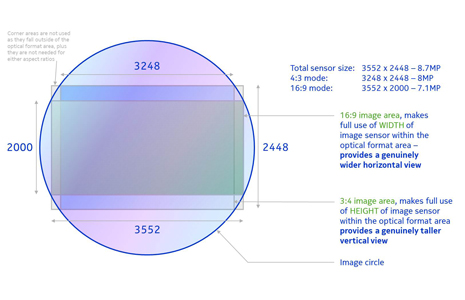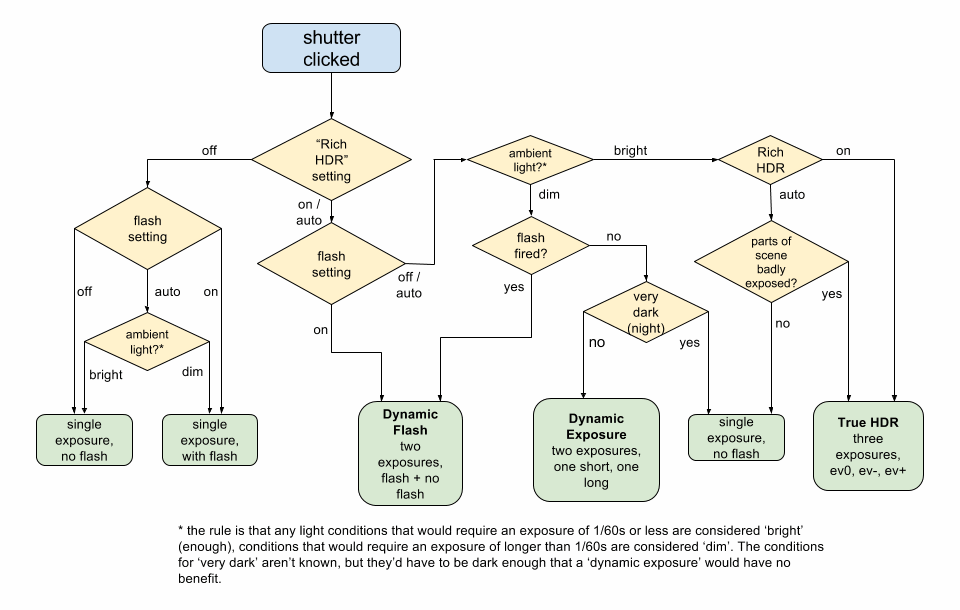Here's Richard's email (quoted with his permission):
I am a Lumia 950 XL user since its release. The questions I have are about the Lumia 950 XL native camera app of Microsoft. As a photo enthusiast I read a lot of your articles about camera comparisons between the Lumia 950 XL and other new flagships. During your posts, I noticed you are using different settings when you make photos. Because I am going on vacation soon I want to make the best photos in any situation.
My questions are about the following options in the Microsoft camera app:
Aspect ratio - When should I use 16:9 or 3:4 aspect ratio? Is 16:9 mainly for landscape photos and 3:4 only for portrait? Can you explain me what aspect ratio I want to use in certain situations? And why can’t I select 19MP at 16:9?
Megapixels and file type - Sometimes in your camera comparison articles you are using 19, 16 or 8 MP, what is the best setting in certain situations? I also see you talking about 8MP oversampling, what is that exactly? Lastly, when should i select JPEG + DNG in the camera settings?
Digital video stabilization - Is it recomended to use digital stabilization in every situation?
HDR on, off or auto - Do you recommend me to force HDR always on except when there are moving objects?
You can see why I thought this worth a feature, not least because I've been asked the same thing (usually in less words!) several times in the last month. To put it simply, is there a 'best' way to set up the Lumia 950 or 950 XL, for best results with minimal intervention?
On the whole yes, though bear in mind that your photographic subjects and needs may be different to mine!
Aspect Ratio
Aspect ratio is brought up quite often. And it's more important than you might think. For lesser smartphones, the 16:9 images are just crops of the full 4:3 images, but on the Lumia cameras, the two photo frames are taken from complementary parts of the optical circle. The diagram below was taken from the old Lumia 800 promo material, but it gives the general idea - the 16:9 frame is not a simple crop:

Which begs the question that was indeed asked. Is one or the other aspect ratio 'best'? 4:3 has more pixels, more information in the frame, but you can't always appreciate as much detail at capture time in the UI since there are black bars to the left and right on the phone screen. While 16:9 gives more pixels left to right, but far less top to bottom, plus it's a better fit for the typical phone display.
So a tough call overall. I tend to go with 16:9 simply because the photos look better at capture time on the phone and look better when viewed later, again on the phone. It all depends where your photos are going to end up. If your destination is just social media or a 4:3-screened laptop then go with that. If your usual destination is a wide-screen TV, for example, then go with 16:9.
It also depends on subject matter, obviously 16:9 is a closer match for a landscape shot. In practice, you'll find yourself switching backwards and forwards between the two aspect ratios, but don't worry if you forget to switch - you're only losing a few pixels and can always do a little extra cropping later on.
As to why you can't select 19MP at 16:9?, that's because the 16:9 frame only covers 16 million sensor pixels. Again, try to get your head around the geometry exemplified above (anyone know if a version has been drawn up for the 950's sensor)!
Megapixels and file type
My favourite 'mode' on the Lumia 950 is to use 8MP - more pixels aren't necessarily better, as you then have to live with, and share, much larger files, with no rea gain. And, when you need to zoom in a little at capture time then by using the 8MP mode you get about 1.5x genuine lossless zoom rather than having to go straight into 'lossy' digital zoom.
Add in the other thing mentioned in the original question - the 8MP mode includes sophisticated 'oversampling', whereby data from the full sensor is used algorithmically to create 'purer' pixels in the 8MP photo, ideally with random digital noise cancelled and averaged out.
There aren't really any downsides to staying with 8MP - if you ever need extra detail then you just zoom in a little and you've got it, just as if you were snapping at 16MP and then cropping in later on.
As to the dual mode that includes DNG capture, if you have to ask whether you need this then you definitely don't. This is a 'pro' option for people determined to fiddle in minute detail over on the desktop later on - the actual DNG 'RAW" files are massive (20MB plus) and will fill up your phone's storage unnecessarily.

Digital video stabilisation
This is an option in the Windows 10 Camera settings and it applies frame-based stabilisation to video capture, but this isn't really needed on the Lumia 950 range - the OIS (physical Optical Image Stabilisation) in the phone is excellent and will itself smooth out wobbles and shakes.
It's true that I've demoed extra digital stabilisation in the past, especially when shooting something with zoom - it works, but there's what's often called 'jellovision', whereby parts of the frame move unnaturally when the digital algorithms get fooled by genuine movement/panning.
So, unless you've got a specific reason for needing super-smooth video (at the expense of jellovision effects), leave the setting off. Which is the default on a freshly reset Lumia 950, I believe. Why is the setting there at all? For lesser phones that don't have the physical OIS - it's overkill on the 950!
HDR
HDR, as it sounds, High Dynamic Range, also called 'Rich Capture' in the Lumia and Windows 10 Mobile world, is a way of combining different exposures to get maximum detail and dynamic range even when there are extremes of light and dark in the shot. The effect can be dramatic or complete rubbish, depending on the subject.
Now, with Nokia/Microsoft's system, you get to choose the 'blending' of the various exposures after the fact, i.e. later on, so in principle you can leave HDR 'on' and then manually remove the HDR blending later on for each photo. But this is time consuming, not to mention using up much more storage space per photo, and Nokia's (and then Micrsoft's) engineers worked on a comprehensive set of rules for the 'auto' (HDR) setting that can, I believe, be trusted.
I even reverse engineered their logic here, and I'll reproduce the chart from that article here too:

Don't worry about following all of the above through, just trust that the auto-HDR system works and, on the whole, does the right thing more often than not. Simply shots which don't require blending are taken with minimal processing and storage requirements, while complicated photos are given multiple exposures, blending processing and storage of the various blends, ready for tweaking later in Photos, if needed.
So leave the setting on 'HDR-A' and trust it.
_____________
Hopefully this has answered Richard's questions and also helped a few others along the way.
In summary, for the Lumia 950 owner:
- Aspect ratio is a personal choice(!)
- 8MP
- Stabilisation off
- HDR-Auto
